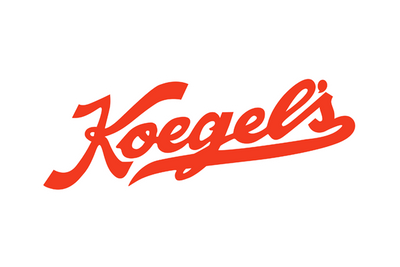
12 Interesting Facts About Neon
Chris DiproseShare
From the early 1900s, when neon became popular in lighting, to more modern uses in cryogenics, neon has been a big part of our lives for the last 125 years.
The modern city landscape has been defined by lighting, and neon signs and lights have been ever-present.
- Neon was discovered in 1898 by 2 British scientists, Sir Ramsey and MW Travers.
- They didn't just discover neon; they found three gases simultaneously: neon, krypton, and xenon.
- Neon is a stable element - meaning it has limited reactivity and is one of the noble gases.
- Neon signs are only reddish-orange; other colors aren't proper neon gas.
- The average household has 10 liters of neon (TVs, fridges, air-conditioners).
- Neon lights go through fog better than any other type of lighting and are still used in modern ships.
- Neon is rare in our atmosphere and is expensive to buy.
- Neon is extremely cold, 3x colder than liquid nitrogen and 40x colder than liquid helium, making it essential in the medical field and cryogenics.
- While neon has uses in modern society, the most common use of neon signs has been surpassed by advances in LED lighting.
Let's dive into some facts about neon.
The Beginning of Neon Gas
Neon first appeared on the world stage in 1898. At University College London, two British scientists, Sir William Ramsay and Morris W. Travers, were hunting for new elements. They cooled air until it became a liquid, warmed it, and collected the gases that boiled off. Using liquid air allowed them to capture and isolate the gases.
Their experiment yielded not one but three new elements: krypton, neon, and xenon. But neon, the gas between helium and argon, would become the show's star.

The Cosmic Connection
Neon has a cosmic origin. It's created during the alpha process of stars, where helium and oxygen fuse. But it takes a star with a mass at least 8 times that of our sun to produce neon. So, every time you look up at the stars, remember you're looking at the birthplace of neon. Neon is the fourth most abundant element in the universe, yet rare in Earth's atmosphere.

The Brilliant Invention of Neon Signs
In 1902, a French engineer named Georges Claude was about to change lighting forever. Using the leftover neon from his air liquefaction company, Claude created the first neon light glass tubes by passing an electric current through the gas.
He showed it off at the 1910 Paris Motor Show. His original intention was to use neon lighting in homes, but that didn't take off. Neon signs became a popular form of advertising, and today, it's hard to imagine cityscapes without the neon glow.

The Colors of Neon
Despite the rainbow of neon signs, actual neon signs are only reddish-orange. Other colors are achieved by different noble gases or coating the glass tube in certain substances to elicit color change in the gases inside the tube. So next time you see a neon sign, remember: if it's not reddish-orange, it's not truly neon.

The Applications of Neon
Neon's unique properties make it suitable for many uses. From television sets and lasers to vacuum tubes and lightning arrestors, neon is everywhere in our daily lives. Helium-neon lasers are created by exciting helium and neon atoms in discharge tubes, where collisions amplify the light to produce the laser.
Even in our homes, an average American household has about 10 liters of neon gas. Neon atoms are crucial in various applications, including understanding ionization potentials in stars and the sun's energy flow.

A Light in the Fog
One of the neon's coolest properties is its ability to cut through the fog. Other lights get obscured, but not neon. This is especially useful in airports, where neon lights guide planes in foggy conditions.

The Cost of Neon
Despite being abundant in the universe, neon is expensive on Earth. Why? Because it's rare in the Earth's atmosphere, making up only 0.0018% of the atmosphere, extracting it from the air makes neon over 55 times more expensive than liquid helium.
The Hidden Dangers of Neon
Neon might be pretty, but it's not entirely safe. Exposure to neon can cause frostbite, and inhaling too much of this gas can cause suffocation. So, while neon lights can dazzle us with their glow, it's best to leave the handling of this element to the pros.

Neon in Cryogenics
Neon's cooling capacity is three times that of liquid hydrogen and 40 times that of liquid helium, so it's an important refrigerant in cryogenics. Neon is used in cryonics, the process of freezing corpses in the hope that future medical technology can revive them. Liquid neon is particularly effective due to its high cooling capacity.

An Element of Stability: Noble Gas
Neon is part of the noble gases group, including helium, krypton, xenon, and argon. Due to their complete outer electron shells, these elements are known for their stability and lack of reactivity. In the periodic table, neon is positioned with an atomic number of 10, making it the second lightest of the noble gases. Neon, with 10 electrons, is the second lightest of the noble gases.

The Neon Legacy
Today, neon lights up our world, from cityscapes to TV screens. Its glow is a symbol of modernity and progress. Whether in the form of flashy ads or scientific breakthroughs, neon's luminous legacy continues to shine.

The Future of Neon
One thing is sure as we look to the future: neon's journey is far from over. Its properties continue to inspire new uses and applications.
If you want a neon sign, you can browse our collection, or if you want something truly customized, please fill out our custom quote form.
Facts About Neon FAQ
What is the difference between neon gas and liquid neon?
Neon gas is the gas state of neon at room temp; liquid neon is the state of neon below its boiling point of -246.08°C.
What are the five key facts about neon?
Neon is colorless, odorless, inert, low density, glows bright red-orange when electrified.
Why is neon special?
When used in neon signs, it glows bright red-orange, and because it is a noble gas, it is chemically inert.
What is neon made of?
It's an element, so it's made up of neon atoms, each with 10 protons, 10 electrons, and 10 neutrons.
What's unique about neon?
It glows bright red-orange when an electric current is passed through it, perfect for signage and lighting.
What's neon most known for?
Neon is best known for its use in neon signs - commonly used for advertising and decorative purposes because of the bright and colorful light.
What is the symbol for neon on the periodic table?
The symbol for neon on the periodic table is "Ne."







